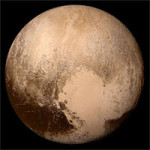TAAA’s first Friday monthly meeting will be held online. The meeting will have a 6:30 P.M. Main Presentation open to the General Public. This will be followed, at approximately 7:15 P.M., by a Members-only meeting, which will feature our popular Seasonal Night Sky Presentation by Mary Turner. We’ll also have voting on proposed Constitution and Bylaw changes. To view the next meeting, please visit https://www.facebook.com/TucsonAstronomy
6:30 pm – Main Public Presentation
Title: Volcanism and Cyrovolcanism in the Solar System: Examples from Earth, Mars, and Europa
Speaker Bio: Joana Voigt received a B.S. and M.S. in Geological Sciences from the Free University Berlin, Germany in 2015 and 2017 respectively and an M.S. in Planetary Sciences from the University of Arizona in 2020. She is currently a Ph.D. candidate at UA’s Lunar and Planetary Laboratory. A planetary geologist, she is primarily interested the eruption products on Earth, Mars, the Moon, to better understand the thermal dynamic evolution of planetary bodies.
Volcanism includes eruptions of silicate magma on terrestrial bodies, as well as in cryovolcanic (icy volcanic) deposts, which form on exceptionally cold outer solar system regions, where water can behave like magma. In Voigt’s presentation, she will discuss examples of silicate volcanism on Earth and Mars, and evidence of cryovolcanism on Jupiter’s moon Europa.
The 2014–2015 Holuhraun eruption produced the largest lava flow-field in Iceland in over two centuries. This eruption helps us understand the dynamics of large silicate lava flows on Earth and on other planetary bodies. Voigt will discuss the Icelandic Holuhraun eruption, and evidence of similar, geologically recent eruptions on Mars that suggest it may still be a volcanically active world. Voigt will also discuss the remains of a cryovolcanic eruption on Jupiter’s moon Europa. She will explain how an impact-induced melting of its crust can generate small brine pockets that lead to a cryovolcanic eruption of salty water onto the surface. Such an eruption—triggered by an impact, not a deep interior process—is fundamentally different from traditional forms of silicate volcanism.
7:15 pm (Approx) – Members-Only Meeting
Title: Seasonal Night Sky followed by voting on Constitution and Bylaw changes
Speaker: Mary Turner
The main presentation will be followed by a Members-only meeting, which features our popular Seasonal Night Sky presentation by Mary Turner. We’ll also have voting on proposed Constitution and Bylaw changes
MEMBERS SHOULD MAKE SURE TO USE THE ZOOM LINK, IN ORDER TO BE INCLUDED.












